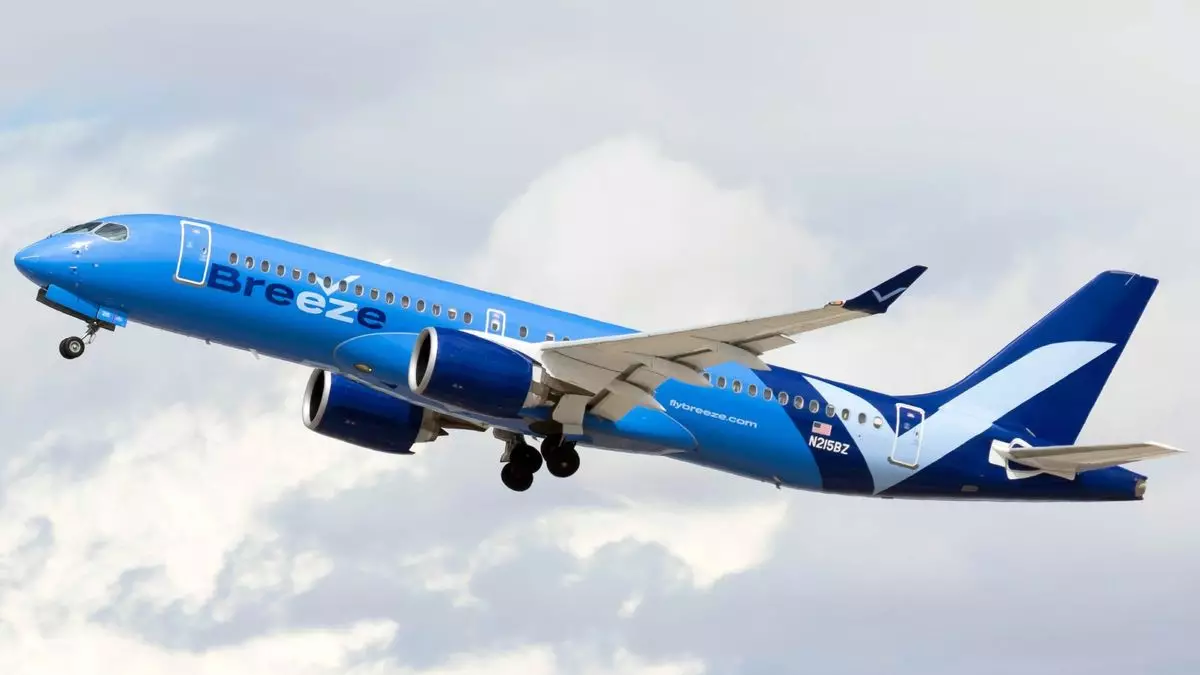Since its inception in May 2021, Breeze Airways has experienced a rollercoaster ride of challenges and developments in the fiercely competitive airline industry. After a prolonged struggle to achieve profitability, the airline recently achieved its first quarterly operating profit for Q4 2024, as announced by CEO David Neeleman. This milestone could signify a watershed moment for the low-cost carrier, raising hopes for ongoing financial stability and growth in the upcoming fiscal year.
Breeze Airways generated more than $200 million in revenue during the fourth quarter, with an impressive operating margin surpassing 4%. Although specific profit figures have yet to be disclosed, the magnitude of this achievement is underscored by the airline’s previous losses. In comparison, the airline had previously reported a staggering negative operating margin of 20.9% in Q3 of the last year, demonstrating the significant turnaround it has accomplished within a limited time frame.
Acknowledging the various factors that have contributed to this turnaround, Neeleman attributed the improved financial performance to both the overall market environment and strategic operational changes within the airline. Rising airfares have created a more favorable backdrop for low-cost carriers, allowing Breeze to not only sustain but also flourish in an industry landscape that has recently shifted to favor high-end fare products. With a fleet of 33 Airbus A220s, the carrier offers diverse seating options, including 12 first-class and 45 extra-legroom seats, catering to different customer segments and enhancing revenue potential.
Moreover, Breeze’s expansion efforts played a crucial role in its improved performance. Last year, the airline added 29 new destinations, increasing its total to 66. Capacity growth also spiked, with a remarkable 52% boost in total seat miles flown throughout 2024. This rapid expansion indicates a robust business model, especially considering Breeze’s ability to forge connections in underserved markets. The airline has strategically targeted smaller airports with limited service, emerging as the dominant carrier in numerous destinations while filling a critical gap in direct connectivity between city pairs with previously little to no options.
Despite its successes, Breeze Airways is acutely aware of the tumultuous nature of the aviation industry. As it navigates a challenging landscape, a crucial aspect of its growth strategy involves focusing on the performance of existing routes rather than merely pursuing expansion for its own sake. While a 25% increase in capacity is anticipated for 2025, the airline plans to adopt a more concentrated approach by prioritizing enhancements in connectivity and frequency from its current destinations.
The challenges faced by Breeze Airways resonate with a broader trend among new entrants in the low-cost sector. Competing newcomer Avelo Airlines, which also launched around the same time, reached profitability ahead of Breeze but experienced a setback in Q3 2024. Analysts, such as aviation expert Brett Snyder, highlight the importance of maintaining profitability in a sector where investor patience wanes rapidly amidst ongoing financial losses. Neeleman’s strong history as an airline founder, previously establishing successful ventures like JetBlue, bolsters confidence; however, the financial scrutiny now looms larger than ever.
Looking ahead, Breeze is keenly aware of two key operational areas requiring improvement: acquiring authority from the Federal Aviation Administration (FAA) to operate international routes and enhancing its on-time performance. Initiatives are underway to advance Breeze’s future ambitions, including launching international routes to Mexico, Central America, and Europe, as well as potential service to Hawaii—albeit not before 2025.
Amid this ambitious vision lies the pressing need for operational enhancements. According to internal metrics, Breeze’s on-time performance hovered at approximately 69.6% last year. Chief Guest Officer Fiona Kiesel has led a series of initiatives aimed at improving punctuality metrics, particularly focusing on reducing turn times at airports, thereby enhancing overall service reliability.
While Neeleman openly acknowledges that the march towards profitability has taken longer than initially anticipated—by about 18 months—the outlook remains optimistic. The airline’s trajectory suggests potential for stability and growth, provided it continues to optimize operations, facilitate strategic partnerships, and remain responsive to evolving consumer preferences.
Breeze Airways stands at a pivotal juncture, one characterized by newfound profitability amid ongoing developments. With the right strategies and attention to operational enhancements, the future appears bright for this ambitious low-cost carrier.


Leave a Reply